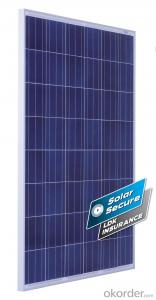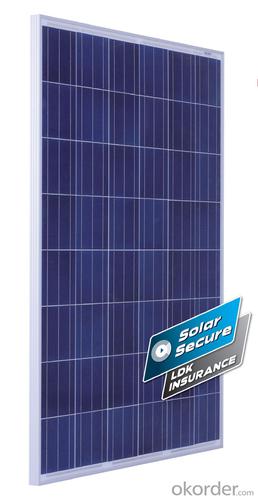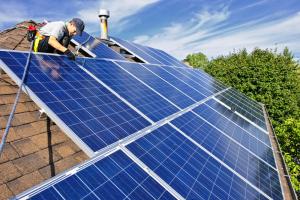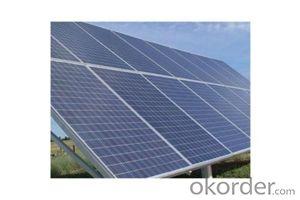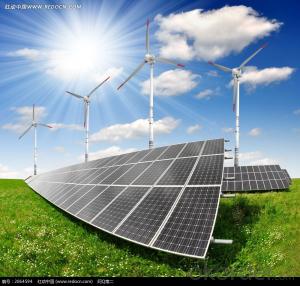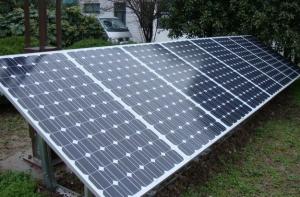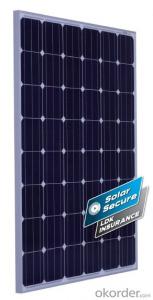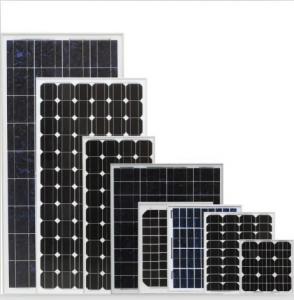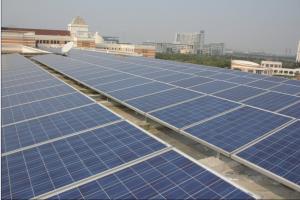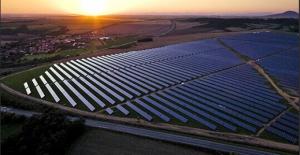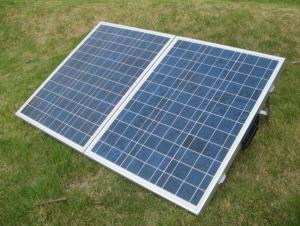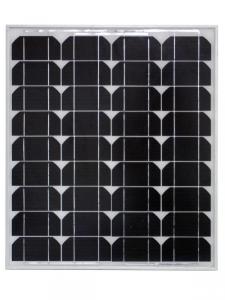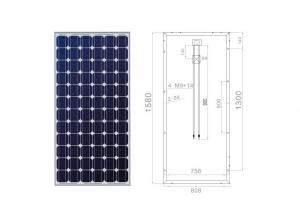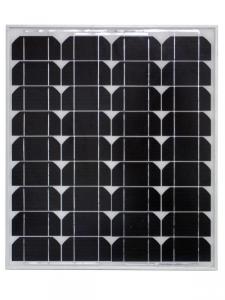Solar Panels Dominican Republic - LDK 48-Cell 205W Module Low Price High Efficiency CE TUV Certification
- Loading Port:
- China Main Port
- Payment Terms:
- TT or LC
- Min Order Qty:
- -
- Supply Capability:
- -
OKorder Service Pledge
OKorder Financial Service
You Might Also Like
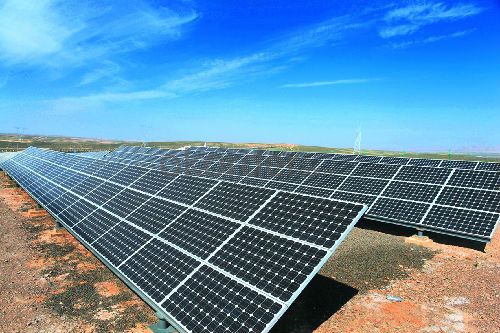
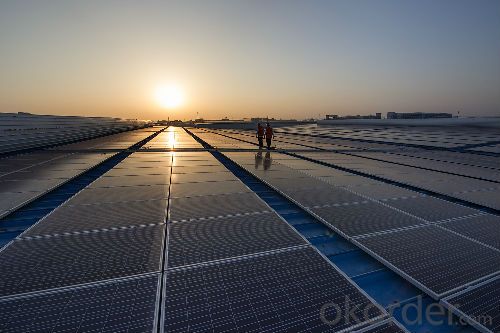

Why US?
· Industry leading module power output warranty of 25 years
· International quality and safety certifications
· Manufactured in ISO 9000 certified factories
· High-reliability with guaranteed 0/+5W peak power classification
· Excellent performance under low light environments
· Entire module certified to withstand high wind and snow loads
Warranty
· 10 years for product defects in materials and workmanship
· First 12 years for 90% of warranted minimum power
· Remaining 25 years for 80% of warranted minimum power
Vertically integrating business model enables us to
· Consistently build high quality and reliable PV products.
· Optimize our cost structure to deliver price-competitive products.
· Adopt cutting-edge product and production technologies.
· Develop the most advanced manufacturing methods.
· Minimize carbon emissions throughout our closed loop production process.
Certification
· IEC:IEC 61215, IEC 61730 (1&2), conformity to CE
· UL 1703 2002/03/15 Ed:3 Rev:2004/06/30
· ULC/ORD-C1703-01 Second Edition 2001/01/01
· UL and Canadian Standard for Safety Flat-Plate
· ISO 9001: 2008 Quality Management Systems
· CEC Listed: Modules are eligible for California Rebates
· PV Cycle: Voluntary module take back and recycling program
· MCS Certificate
After-sales Services Undertakings
1. During the equipment commissioning period, the company will send scheduler to commissioning to ensure debugging smoothly and a one-time test commissioning.
2. The company is responsible for professional users’ on-site operator training and technical exchange.
3. The long-term tracking service system: we practice lifelong quality of our product tracking service, and we also will take effective measures and solutions for the user of the technical issues and equipment problems.
4. Regularly listen to opinions and suggestions of users, to provide users with new trends in technological innovation, new product information and enhance mutual understanding.
5. Any problems, the company will provide solutions for users within 48 hours.
FAQ
Where can I buy your products?
You could find our products from dealers or contact our sales team directly. We will provide you with detailed services.
How to contact us?
Contact details can be found from website www.okorder.com to contact us. We look forward to providing you with professional services.
What is the application field of your products?
They can be used in the small photovoltaic (PV) grid power generation systems of family units as well as the commercial photovoltaic system such as BIPV, BAPV and etc.
What kinds of modules do your inventers support?
Our inventers support most of mainstream components and modules in the market. Should you require more details, please do not hesitate to contact our technical personnel.
Dimensions(Laminate):1320 x 986 x 35 mm[51.97 x 38.82 x 1.38 in]
Solar Cells:48 (6x8) multicrystalline silicon -
156 x 156 mm [6 inch] solar cells
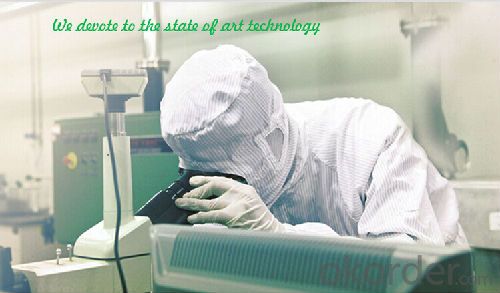
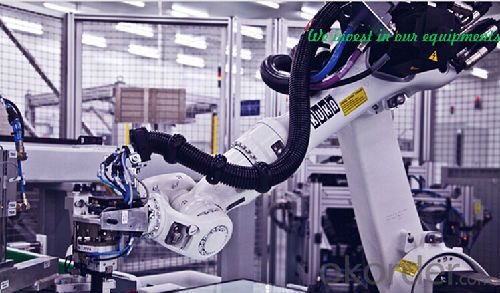
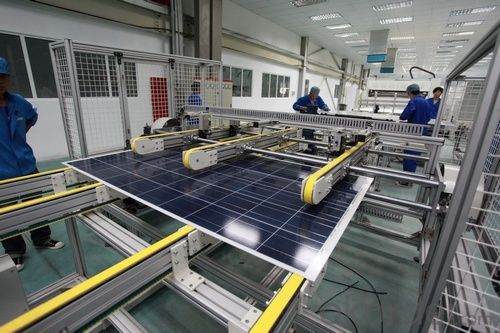
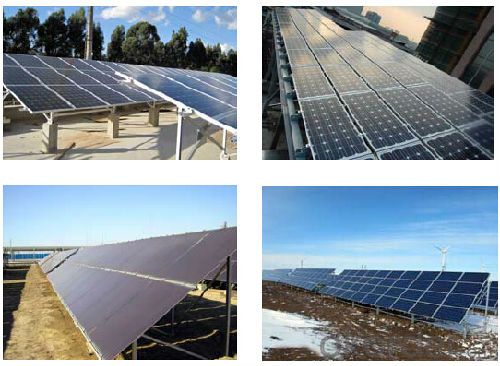

- Q: i have a small solar panel,the ones from a garden lamp that turns on at night-i think.what i was wondering is can i just connect the solar panel to a capacitor and then a light just to test?or do i need something to convert the solar energy to usable energy?and how do i tell if a capacitor is broken?
- solar panels for those lights provide the power directly to the light, so there is no capacitor used or needed. in any event, capacitors very rarely break but you would need an OHM meter to test it.
- Q: How much electricity can a solar panel produce?
- The amount of electricity a solar panel can produce depends on various factors such as the size and efficiency of the panel, the amount of sunlight it receives, and the location. On average, a standard solar panel can produce anywhere between 250 to 400 watts of electricity per hour.
- Q: Can solar panels be installed on an agricultural greenhouse or nursery?
- Yes, solar panels can be installed on an agricultural greenhouse or nursery. Installing solar panels on these structures can help offset energy costs and reduce reliance on traditional power sources. Additionally, it can contribute to sustainability efforts by harnessing renewable energy and reducing carbon emissions.
- Q: Are there any government incentives or rebates for installing solar panels?
- Yes, there are several government incentives and rebates available for installing solar panels. These incentives vary by country and even state in some cases. Examples include the federal solar Investment Tax Credit (ITC) in the United States, feed-in tariffs in certain European countries, and grants or rebates offered by local governments. It is advisable to check with local authorities or consult a solar installer to determine the specific incentives available in your area.
- Q: Can solar panels be installed on a car?
- Yes, solar panels can be installed on a car. Solar-powered cars have been developed and are being used as a means of reducing carbon emissions and increasing energy efficiency. These panels are typically mounted on the roof or hood of the car to collect sunlight and convert it into electricity to power the vehicle's functions. However, the amount of energy generated by these panels may be limited, and they are usually used as a supplemental power source rather than the sole means of propulsion.
- Q: I need to know how solar photovoltaic panels work. Anyone have a good explanation?
- Hey E Girl, photovoltiac panels are pretty simple. They start with a solid block of silicone, and shave thin layers off of them, called wafers. Once you have about 72 of them, you take half of them and dope them with boron, then the other half are doped with phosphorous. Once that's done, they take one each phosphorous and boron wafer, and glue them together with a special conductive epoxy glue, and attach a wire to each wafer. When the two glued wafers are exposed to the sun, a reaction occurs that forces free electrons from the silicone particles from one wafer onto the other, and a voltage is generated between them, about /2 volt to be exact. Once all 36 pairs are glued together, they are wired in series, connecting the phosphourous wafer from one to the boron wafer on the next, and so on. If you start with 72 wafers, you'll have 36 pairs glued together when you are done. At /2 volt each, that makes a 8 volt panel, which is used to charge a 2 volt battery. The charging source always has to have a few more volts than the battery. These 36 pairs of cells are then arranged on some kind of back board, glued down, covered with acrylic glass and mounted in a frame. There are some great websites you can go to for more info, I will list some below. Did you know that there are over 00,000 homes and businesses in the US alone that use some level of solar power to operate their electrical systems? That's good news. We actually live in one of those homes, it is powered by both the wind and sun and heated with solar and wood. I hope this answers your question, good luck, and take care, Rudydoo
- Q: quot;Does it take more energy to produce a solar panel than what the same solar panel can generate in its useful lifetime?quot;
- No. That lie is put out there by people who would lose out if solar panels ever became widely used. It does take about as much power to produce them as the panels make in 2 years in a good location, but considering their useful lifetime is at least 20-30 years, that isn't much. Wind power produces as much power as is used to create the windmill in 7-9 months in a decent location. Neither will ever produce as much power as they required to be made if placed in the wrong location, like in the shade or a non- windy area. No coal plant would ever make as much energy as it took to build it if no coal were provided either.
- Q: Can solar panels be installed on a data storage facility or server farm?
- Yes, solar panels can be installed on a data storage facility or server farm. It is a viable option to harness renewable energy and reduce the carbon footprint of these energy-intensive operations.
- Q: Do solar panels require a backup battery system?
- No, solar panels do not necessarily require a backup battery system. The decision to install a backup battery system depends on individual needs and preferences. While a backup battery system can store excess energy generated by solar panels for later use, it is not mandatory for the functioning of solar panels.
- Q: What's your opinion on solar power? More specifically, having panels installed on your roof to reduce your electric bill. I'm having a consultation tomorrow to get more details. I live in the SW, so it's always crazy sunny here. I don't know what the cost will be yet. Is it something you'd consider if the situation was right? If not, why?
- Lots of folks are installing them in my neighborhood in the Mid-Atlantic. I'm going to hold off until I can ask my neighbors how much their electric bill has gone down, after they've had the panels for a year or so. I don't see any reason to rush into it. Also, I'm a little concerned about what happens if a leak develops in your roof during or after installation. Who pays to fix that? That, plus the west side of my house faces the street, and I don't think I want my solar panel array to be greeting guests and visitors...I'm just not that in love with the looks (although the shingle- or tile-like versions of panels that Tesla is advertising would not be bad). So the panel installers would have to be satisfied with an east-facing installation on the rear slope of my roof.
Send your message to us
Solar Panels Dominican Republic - LDK 48-Cell 205W Module Low Price High Efficiency CE TUV Certification
- Loading Port:
- China Main Port
- Payment Terms:
- TT or LC
- Min Order Qty:
- -
- Supply Capability:
- -
OKorder Service Pledge
OKorder Financial Service
Similar products
Hot products
Hot Searches
Related keywords
